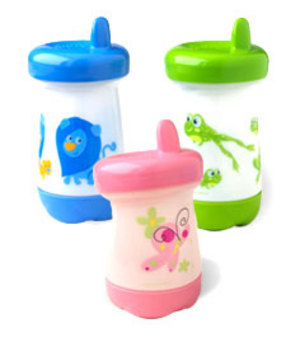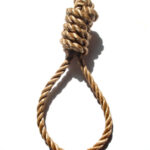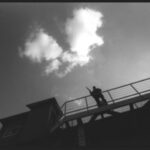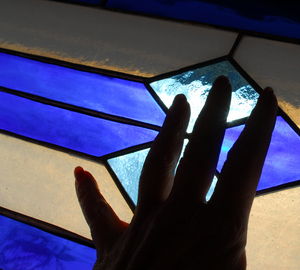Which brands and types of training cups are best for the baby no longer drinking from a bottle? Choosing the right cup can be a process of trial and error. This review includes first-hand experience with numerous brands and types of cups. Read this article to find out which training cups work the best, and which ones do not.
Consider these factors before purchasing a training cup, and hopefully you will select the right training cup for your child.
Best and Worst Training Cups for Babies
Easy Grip 10 oz. No Spill Sipper Cup by Nuby.
Age: Six months and up.
Baby-Friendly: The hourglass shape of the training cup is easy to grip for babies.
Features: According to Noby the silicone valve is “streamlined and easy to clean.” The Nuby cup seemed to be a good training between bottle and cup with its soft, silicone valve. However, baby bit through the valve after only a month of sporadic use. The two drinking slits became one big whole. Luckily, the plastic valve piece did not totally come off and get swallowed by baby.
No-Spill: As long as the threads on the cup and the cover match up, and aren’t missing, this could be a no-spill training cup. The second cup did not get much more than a month of use, as The threads on the cup were missing on one part, which made for a poor seal. When tilted. as is necessary to drink from the cup, liquid spilled, not dripped out.
Price: $4.99.
Overall: Skip this cup. The two training cups we bought quickly found themselves in the garbage.
9 oz. Tinted Cup by Nuby
Age: Six months and up.
Baby-Friendly This tall cup is meant for older children. It is sleek, and not easy to grasp.
Features: The basic 9 ounce training cup by Nuby has no handles or straw. It uses a fast/slow valve. The spout is hard and a bit elongated.
No-Spill: While the basic Nuby training cup claims to be no-spill, it has leaked from day one. Also, the valve is not secure and tends to easily drop into the liquid.
Price: Under $1.
Overall: Skip this cup. Even at the price, it’s not worth the hassle of a dropping valve and the mess it can create.
24 Pack Take ‘N Toss 7 oz. Spill Proof Cups by The First Years.
Age: Nine months and up.
Baby-Friendly: These short and curvy cups are small, light and easy-to-handle. Smaller babies will enjoy holding these training cups from the bottom, in their palms.
Features: These training cups are pretty basic. They come with interchangeable covers, no handles, no straws and no spouts. The spout is hard, with some holes in it.
No-Spill: When turned upside down and shaken, liquid will spill out of these training cups.
Price: $11.99 for 24.
Overall: While this cup is intended for travel or throw away use, baby (9 months-15 months) seems to like these cups. They are best used while sitting in a high chair, or at a table. The cover is easy to remove, so for some children who like to take covers off of cups, they may not be the best choice. These training cups are also great for outdoor use. They also stack neatly in your cabinet. Yes, you will lose some, yes a cover will get lost here and there, but compared to other cups, this is a top pick for its usefulness, price.
The Insulator Sport Straw Cup by Playtex
Age: Playtex says “Stage 4” but does not explain their stages.
Baby-Friendly: The The Insulator Sport Straw Cup is a larger cup, for older children.
Features: This training cup is intended to keep beverages cool. The top closes, and there is a straw tip attached. Another straw (not a standard-sized straw) attaches inside.
No-Spill: When the cup is closed and the straw tip is tucked in, this training cup does not spill. When the straw is sticking out, all it takes is an adventurous or clumsy child to tip the cup and out pours the liquid from the straw.
Price: $5.99.
Overall: I tried this cup for my 15-month-old on Overall from a parent with a child of the same age. For a child this age, however, it is more fun to tip the cup upside down and pour out the beverage from the training cup than it is to drink out of it. The detachable straw is a problem, and can be easily lost. This training cup is best for older children.
Sip & Smile by Gerber.
Age: 10 months and up, or “crawler.”
Baby-Friendly: Baby seems to like the softly rendered images on the cup. The shape of the cup fits nicely into baby’s hands.
Features: The Sip & Smile is a simple, handle-free training cup. The spout is a unique design compared to other training cups.
No-Spill: When turned upside down and shaken, drops of liquid will come out.
Price: $6.85 for a two-pack.
Overall: The size of the Sip & Smile training cup is just right. The unique valve is secure. So far baby likes this training cup and will drink out of it, which is the most important aspect of all.
420ml Flip-It(TM) Vari-Flo® Straw Cup by Nuby.
Age: 12 months and up.
Baby-Friendly: This tall and printed cup looks more like a toy, and baby might just like it for that reason.
Features: This training cup does not have handles, There is a sliding lid with a large nob that tucks the straw in when not in use. The interior straw removes, but is more secure than the Playtex Sports training cup’s straw.
No-Spill: The 420ml Flip-It(TM) Vari-Flo® Straw Cup is spill-proof when the straw is tucked neatly away and when the straw is out. Even when you shake the cup upside down, no liquid spills out.
Price: $6.99.
Overall: This seems like a decent strawed training cup. However, the spout on the top straw piece is made of soft silicone, which if chewed through, could pose a problem.
There is a reason that baby product manufacturers continue to design new training cups. While it seems like a simple product, nobody has got it exactly right yet. The important part is to find the cup that works for your baby.
Remember, every baby is different. Some will start to use a cup at six months, others may be ready later. Use this guide as a starting place, and then find the one that works best for your baby’s needs.







